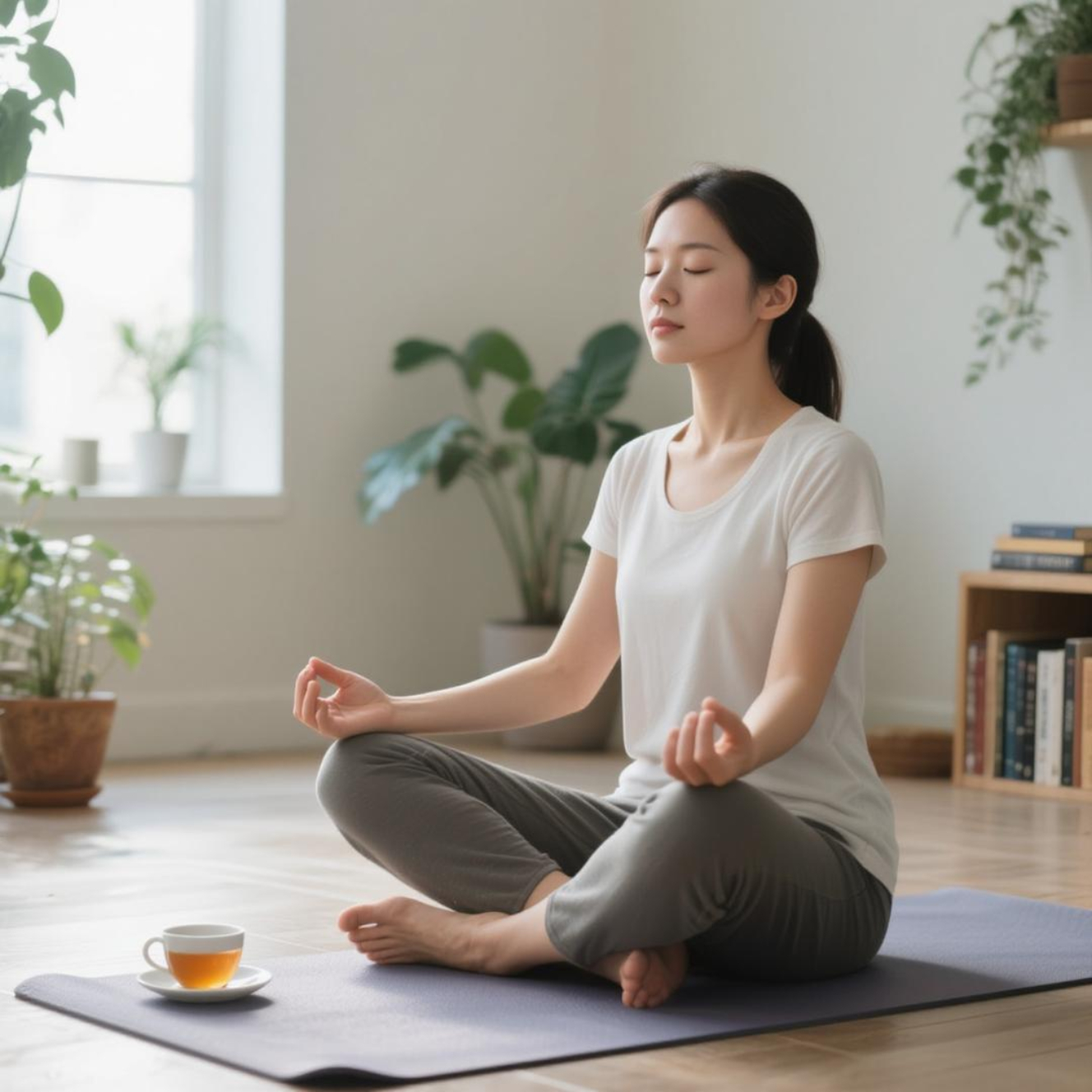Mindfulness for beginners is the gateway to living with more presence, focus, and lightness in your daily life. This article introduces the concept, simple practices, and key benefits you may notice within just a few weeks. Get ready to transform your routine with small, mindful actions.
Here, you’ll find practical instructions to bring awareness into your day—even in the middle of a hectic schedule—without complications. The goal is to make the path easier by offering simple, realistic steps. Shall we begin?
Based on recent studies and real-life experiences, we’ll explore essential techniques and how to make them a natural part of your daily routine, helping you achieve mental and emotional balance.
What Is Mindfulness and Why It Works
Mindfulness is the practice of paying attention to the present moment, without judgment—observing thoughts, sensations, and emotions with curiosity and acceptance. This intentional awareness allows your mind to slow down and helps you experience the now more clearly.
For beginners, mindfulness might seem simple, but its impact is profound: it improves emotional regulation, reduces stress, and boosts mental resilience. When your brain is trained in this state, it forms new connections that help you handle challenges with more awareness and less reactivity.
This practice is effective because it activates brain regions related to emotional regulation and focus. Even a short daily practice can bring significant changes in how you respond to stressful or demanding situations.
Simple Techniques for Getting Started
Beginner-friendly mindfulness is built on easy, straightforward exercises that don’t require special equipment or space. Start with just 3 to 5 minutes a day:
- Breath Awareness: Sit comfortably, close your eyes, and focus on your breath as it moves in and out. When your mind wanders, gently return your attention to the breath.
- Body Scan: With your eyes closed, move your awareness through each part of your body, noticing sensations and any tension. This encourages relaxation and self-awareness.
- Mindful Walking: While walking, pay attention to each step, the feeling of your feet touching the ground, the air temperature, and the sounds around you.
- Conscious Pause: Choose a moment in your day—right after waking up or before going to bed—to pause, take a sip of water, or simply observe your surroundings mindfully.
These techniques help beginners become more present in their own bodies and minds. Repeating them daily turns the practice into a habit, bringing long-lasting benefits.
Mental and Physical Health Benefits of Mindfulness
Practicing mindfulness regularly brings a range of proven benefits. Mentally, it reduces anxiety, improves mood, eases symptoms of depression, and increases concentration.
Physically, mindfulness helps reduce stress symptoms in the body, lowers blood pressure, improves sleep quality, and even boosts the immune system. It also supports emotional regulation, helping prevent overreactions in everyday situations.
Over time, mindfulness brings greater balance: you become less reactive, more attentive, sleep better, and generally feel more well-being.
Common Challenges and How to Overcome Them
It’s normal to face challenges when starting: a restless mind, lack of time, feelings of unproductiveness, or low patience. These obstacles are common and part of the learning process.
To overcome them, try adjusting your routine. If 5 minutes of seated meditation feels like too much, start with a mindful walk. If a wandering mind discourages you, use short guided audio meditations. The key is to adapt, gently.
Also, create a cozy space—even if it’s small—and set reminders on your phone. Having a fixed moment in the morning or late afternoon helps solidify the habit and build discipline.
Bringing Mindfulness into Your Routine: Practical Tips
Integrating mindfulness into your daily life helps the practice stick. You can start first thing in the morning, before checking your phone. Use your shower as a mindfulness moment: feel the water, hear the sounds, notice the temperature.
Another valuable tip is using triggers: your first cup of coffee or tea can become a mini-practice—drink it with awareness, notice the aroma and taste mindfully. With each breath, return to the present moment.
Throughout the day, take conscious pauses: breathe deeply and slowly before an important call or after getting out of the car. These small doses of mindfulness enhance your attention and reduce emotional overload.
Time to Take Action: Start Today
Now that you understand what beginner mindfulness is, how it works, and how to fit it into your life, it’s time to put it into action. Choose a short time—say, 3 minutes at the start of your day—and practice daily without self-criticism.
Keep a simple log of your challenges and how you feel after each session. Over time, increase the duration as you gain confidence. What matters most isn’t how long you practice, but how regularly you do it—with kindness toward yourself.
Need help creating a practice plan, picking meditation music, or handling distractions? Just ask—I can put together a companion guide or a step-by-step plan for your first few weeks. Start now—your focus, calm, and well-being will thank you!
